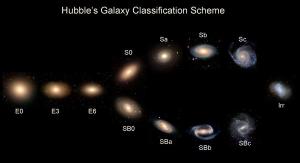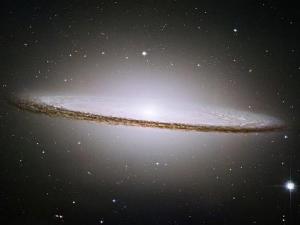Blog
The Other White Meat
18 January 2015
When you picture a galaxy, you probably imagine a graceful spiral galaxy. While spiral galaxies are quite common, there are other types. When Edwin Hubble first categorized galaxies, he labeled them as spiral, irregular or lenticular. While spirals are the most common type of galaxy, the second most common is lenticular.
 GalaxyZoo
GalaxyZooIn Hubble’s day, some presumed that galaxies began as irregular galaxies, when then collapsed into flat spiral galaxies over time. We now know that isn’t the case. It turns out ellipticals begin as small spiral galaxies, in early galactic clusters, but frequent collisions stirred them up. As they ran out of gas and dust to fuel star production and maintain their spirals, further collisions led to their irregular shape. Lenticular galaxies share features of both spirals and irregulars. Like spirals they tend to have a central bulge and a flat disk shape. Like irregulars they tend to be populated by old stars. So how did these galaxies form?
 NASA/ESA
NASA/ESAIf they were irregular galaxies on the way to becoming spirals, one would expect them to have active regions of star production and plenty of gas and dust. But lenticulars don’t have much star production, and while they have dust, there’s not as much as in spiral galaxies. Given that lenticulars are populated by older stars, it seems that they are aging spiral galaxies. As spiral galaxies age, they gradually consume the gas available for star production. These regions of gas help maintain the spiral shape of the galaxy. But after the gas is consumed, the spiral arms begin to smear out, and the remaining dust tends to follow circular arcs.
So what once looked like a transition between spiral and irregular galaxies seems to be the shape of things to come for many spiral galaxies.